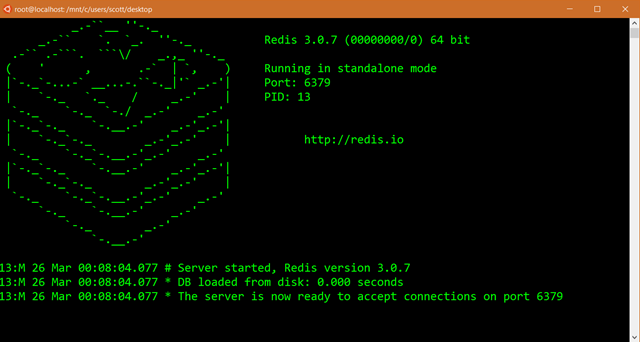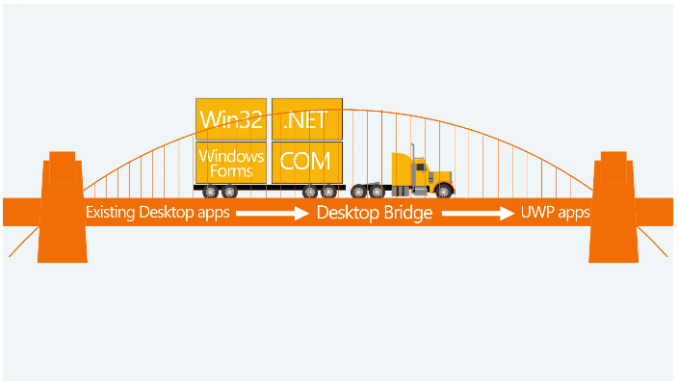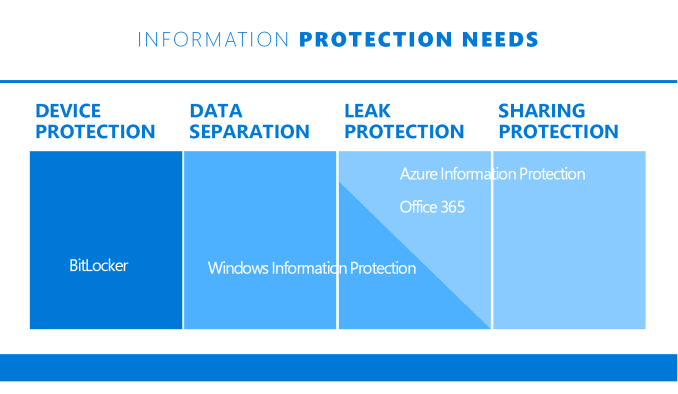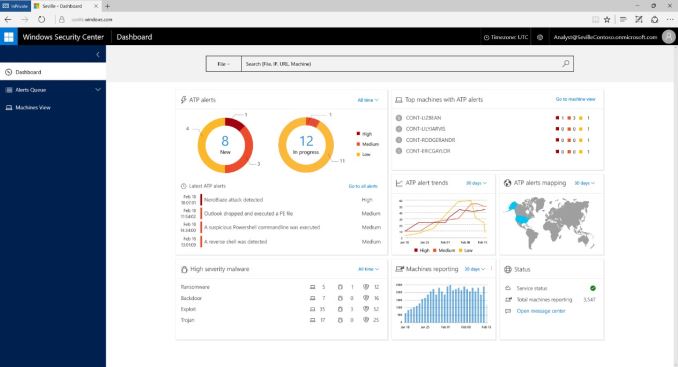Windows 10 Anniversary Update: The Road To Redstone
by Brett Howse on August 2, 2016 8:00 AM EST- Posted in
- Operating Systems
- Microsoft
- Windows 10
Developer and Enterprise Features
Bash shell
At their Build developer conference, Microsoft announced that the Bash shell would be available in Windows 10 with the Anniversary Update, and they have delivered. Bash has been available in the Insider Program for quite a while, so it’s been well tested already. For those wondering why Microsoft would go to the trouble of adding another shell, the goal is to make Windows 10 more friendly for web developers who often have toolchains in Bash.
Image Source: hanselman.com
Microsoft partnered with Canonical to provide user-mode binaries, so most of the commands which work in Ubuntu will work in Windows 10 as well. The Bash shell is not running Linux in a virtual machine behind the scenes either. This is Ubuntu binaries running on Windows 10.
For those that wanted to leverage open source toolkits but could not do it on Windows before, this should be a nice addition to Windows.
Centennial Apps
Project Centennial is Microsoft’s solution for existing Win32 apps being moved forward to the new Universal Windows App (UWP) platform. With the Anniversary Update, Microsoft is bringing official support for Centennial Apps on Windows 10, where as prior to this it was all part of the testing phase.
Once a Win32 or .NET app has been converted to UWP, it will have the ability to do push notifications and have a Live Tile, just like all UWP apps. The install process is much cleaner, and uninstalling ensures that all traces of the app are gone. A converted Win32 app can be transitioned to the new XAML layout as well, which would allow for scaling of the UI much easier than any sort of DPI method.
Converted apps can also be put in the store, and updated through the store. For those that prefer to offer the app in a more traditional download and install way, the converter creates an AppX package which can be loaded onto any Windows 10 PC.
The app will have a virtualized file system and registry, and it won’t work for apps that have to run as administrator, but there are certainly some upsides to having Win32 apps converted to UWP. We’ll have to see how this goes over time, since it’s a brand new feature. Certainly apps that are no longer developed will never move to this model, it’s a smart way to at least offer the UWP platform to traditional Win32 developers.
Enterprise Features
Microsoft can’t leave out the Enterprise, since that’s a huge part of their business. The Anniversary Update brings some updates here too. Things like Windows Hello which are also usable by consumers will of course be available, but there are a couple of features targeted specifically towards the enterprise.
The first is one that we’ve heard about for about as long as Windows 10 has been around: Windows Information Protection. This feature was previously known as Enterprise Data Protection, and it is a mechanism to prevent data leaks by employees, either wittingly or unwittingly. Files can be designated as Business files based on where they are located, or where they came from, and end-users won’t be able to copy those files or their contents without switching it to a personal file, and whether or not they can do that is controlled by policy through Mobile Device Management or System Center Configuration Manager.
We’ve discussed this in the past, but there’s a great TechNet article now that the feature is being made available with this update.
The other big enterprise feature is Windows Defender Advanced Threat Protection, and yes the name is a mouthful. WDATP will help administrators detect, investigate, and respond to attacks to their infrastructure. It combines a client built-in to Windows 10 along with cloud infrastructure to provide tools and dashboards to see what’s going on now, and what’s happened in the past. It should be a powerful tool for IT admins. You can read more at TechNet as well.














194 Comments
View All Comments
Penti - Tuesday, August 2, 2016 - link
Centennial is still Win32.Gigaplex - Wednesday, August 3, 2016 - link
UWP is still based on top of Win32 as well.Penti - Wednesday, August 3, 2016 - link
Yeah in large parts, any how Centennial is still using the Win32 VS CRT and all and not Windows Runtime with it's own C++ runtime and framework aka UWP/UWA/Store-app/Modern/Metro/WinRT. As the binaries aren't converted but rather packed into an AppX package. Nothing would work without Win32. You can't even use Windows Runtime to build a Windows Runtime (UWP) app as the development tools won't move to it.API's (some of them) previously only available to Store apps have been made available to Windows/Win32 applications like the inking API so I don't think freezing out Win32 apps by moving new features to WinRT/UWP and to UWP apps only would work or be desirable either. Would only cause fragmentation and vendors would start to replace deprecated or stalled API's with their own stuff which might just make it more difficult to develop for the platform with more stuff you need to support, but probably not as difficult as porting to UWP but still frustrate users and developers.
Achaios - Tuesday, August 2, 2016 - link
Still on windows 7 for my main PC. My old laptop still runs Windows XP.Can't see myself ever upgrading to Windows 10, except when a DX11 game absolutely requires Windows 10 (and DX 11) to make 60 FPS. Even so, I'd return back to the Windows 7 partition after gaming on Windows 10.
Michael Bay - Tuesday, August 2, 2016 - link
I can kinda sorta understand this 7 attachment, but why would you need the fossil?SteelRing - Tuesday, August 2, 2016 - link
There is nothing I need to do that cant be done in Win7, or even WinXP for that matter. Not having that b1tch Cortana in the background spying on you the whole time is a huge relief.smilingcrow - Tuesday, August 2, 2016 - link
XP? Yikes, you can keep that 32 bit over-rated POS and yes there was a 64 bit version which was hardly supported.Achaios - Wednesday, August 3, 2016 - link
My 2003 laptop can't run anything else. Specs below:CPU: Intel Pentium 4@3.06 GHz with HT (1 core two threads)- GPU: NVIDIA Geforce4 460 Go AGP 64 MB DDR RAM - MOBO: Intel 845 PE chipset based - RAM: 2GB DDR RAM@333 MHz -
http://i.imgur.com/Y9oQ6xW.jpg?1
This laptop is all I need to work. It can run Firefox with Ad Blocker, MS Office, and GOM Player and it comes with a 16 inch screen too.
BrokenCrayons - Thursday, August 4, 2016 - link
Your reasoning is perfectly sensible. If your laptop works for you with its given OS and hardware, then you should continue to use it in a way that suits your needs.The point of computer technology from its inception was to assist people in accomplishing tasks more efficiently. To that end, the computer should kowtow to the needs of the person using it by fitting a variety of requirements for mobility, interface, and functionality. I think we've lost sight of a lot of that since the industry has grown in size and gained something of a life of its own. Windows 10 seems something of an outgrowth of computers being mistreated as devices that serves the company making the software they runs rather than supporting the needs of the end user. In the end, Windows 10's master is Microsoft rather than the system owner. The justifications Microsoft will offer are numerous (telemetry gathering, system security, ease of use, following the trend of closed-system modern phones, etc) and other tech companies are just as guilty of lacing services they offer with self-serving capabilities (thanks for being the industry leader on that one Google/Alphabet) that simply don't benefit the end user. What you end up with is a mutually-destructive relationship where end users aren't happy and companies offer polarizing, unsatisfactory products in an attempt to incorporate their own needs into things that are supposed to be all about the customers they serve.
sadsteve - Tuesday, August 2, 2016 - link
Well, I was borderline with my install of Windows 10 but there are just too many negatives vs positives with this release so I regressed my system back to Windows 8.1. I"ll stick with 8.1 till end of support. I just want to operate my machine my way, not Microsoft's way.I did like the idea of the Linux subsystem but that would have been the only plus. As it is, I can continue using MSYS2 for my 'Bash'ing on my Windows box.
And speaking of Bash, I've had Mint Linux on my Vista era laptop for ~9 months and it seems to do everything I need for my daily computing needs (no gaming or Photoshop are done on the laptop). There's even a device driver from Brothers for my multifunction printer.